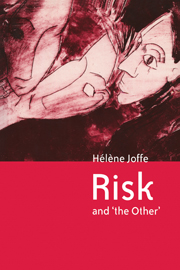Book contents
- Frontmatter
- Contents
- Preface
- Acknowledgements
- 1 Responses to risks: an introduction
- 2 Human responses to risks: ‘not me’, ‘the other is to blame’
- 3 A study of lay people's responses to a risk: HIV/AIDS in Britain and South Africa
- 4 Evaluating two social psychological models of the response to risks
- 5 The source of linking risk and ‘the other’: splitting objects into ‘good’ and ‘bad’
- 6 Social representations of risks
- 7 Emotional life: a new frontier for social theory
- 8 Changing social representations of risks
- References
- Index
8 - Changing social representations of risks
Published online by Cambridge University Press: 22 September 2009
- Frontmatter
- Contents
- Preface
- Acknowledgements
- 1 Responses to risks: an introduction
- 2 Human responses to risks: ‘not me’, ‘the other is to blame’
- 3 A study of lay people's responses to a risk: HIV/AIDS in Britain and South Africa
- 4 Evaluating two social psychological models of the response to risks
- 5 The source of linking risk and ‘the other’: splitting objects into ‘good’ and ‘bad’
- 6 Social representations of risks
- 7 Emotional life: a new frontier for social theory
- 8 Changing social representations of risks
- References
- Index
Summary
If people worried constantly about the plethora of risks that might face them each day, life would be intolerable. The sense of invulnerability to potential danger is adaptive. Indeed, I have shown that there is a link between a high level of optimism regarding risks and better mental well-being, and evidence for a positive relationship between optimism and the ability of one's immune system to fight off illness. However, the ‘not me – others’ response to epidemics, wars and many other risks leaves people open to being affected by them, because the feeling of invulnerability may decrease people's chances of taking precautions against coming into contact with them. This makes the ‘not me – other’ response an issue of grave concern for those responsible for controlling levels of risk taking in a society. In light of the explanations which I have put forward for the ‘not me – others’ response, can it be modified? Are deep-seated, defensive responses to imminent danger inevitable?
Are representations of risks changeable?
Can risks be represented without blaming ‘the other’? Must a polluting ‘other’ be represented as the harbinger of disaster? Strands of anthropological and cultural theory display profound scepticism concerning the possibility that social representations of risks can be changed. From this vantage point, ‘the other’ and risk are inextricably linked since deep-seated, defensive responses to danger protect communities, groups and selves from potential chaos.
- Type
- Chapter
- Information
- Risk and 'The Other' , pp. 126 - 145Publisher: Cambridge University PressPrint publication year: 1999

